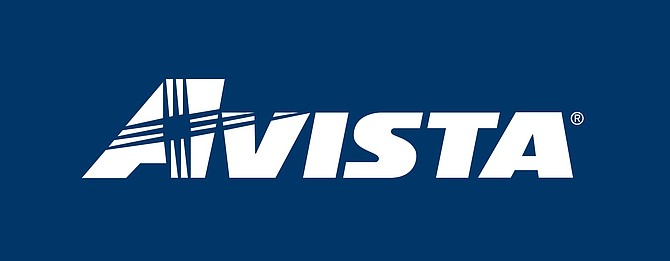Does Avista make too much money?

Local utility’s results mirror industry norms
This is an exercise in business analysis. I’ll be your guide.
The first step to deciding whether a company makes too much money is not to look at how much money it makes.
As counterintuitive as it might seem, that’s not the first step in this process.
The place to start, rather, is to ask how much money can be made without even trying. This is an investing question — question of how best to allocate resources to obtain a desired result. It’s an exercise whereby we seek to first determine what a reasonable rate of return is for a given sum of money. (We assume for the sake of discussion that “we” have enough cash laying around to launch a power company.)
That might seem strange. The business of selling electricity, after all, doesn’t seem to have much to do with the long-term performance of the Standard & Poor’s 500 Index.
Except that it really does.
Let me explain.
From 1965 through the end of last year, the compound annual return of the S&P 500 is 9.7%, assuming all dividends are reinvested. Some years the index, which tracks the performance of the largest 500 investor-owned companies in the United States, gains as much as 30%. Bad years can see declines that size or even larger. The compound rate is not the average rate of return, it’s the actual rate of return that owners get.
Using an index fund like Vanguard Admiral, an investor can own the S&P and capture its results at functionally no cost. (The fund’s expense ratio is 0.05% per year, which is about as close to nothing as you can get on Wall Street.) If we can’t beat the benchmark return, there’s no point in going into business. Why deal with all the headaches of running a power company if you can park a few billion clams in the S&P and collect 9.7% a year for doing nothing? After all, that rate of return doubles the investment about every 7.5 years, far exceeding other easily accessible returns like those generated by bank CDs or super-safe U.S. Treasurys. The rate of return afforded us by the opportunity to invest in the U.S. stock market establishes the baseline for a reasonable rate of return if we opt to go into business.
Public companies — the fancy name for companies people can buy stock in — report their results on a quarterly and annual basis. Avista last gave investors a peak into its books with its numbers for the period ended June 30. In that time, it had revenue of about $300 million. After all the costs of providing natural gas and electric power to its nearly 400,000 customers were subtracted out, Avista had $25.319 million in net earnings. That works out to a net profit margin of about 8.4% for that quarter. For 2018, the company earned $136.4 million on $1.4 billion in revenue, or a net margin of 9.7%. Past years are fairly close to this, though results varied. Avista’s 2017 results showed net earnings of about 8.0%; the year before, they came in at 9.5%.
Is that too much money? Would you accept less if it was yours?
That’s how Avista fares when asked to compete against the market. But is that a good comparison? That’s worth checking, so we compared Avista’s net results to those of Duke Energy, one of the nation’s larger utilities. Duke had $24.1 billion on its top line in 2018. On the bottom: Earnings $2.67 billion, or a net margin of 11.1%. The data suggests the expectation of a utility’s net earnings meeting or matching a market return appears reasonable.
Still, there’s a lot of ground between revenue and earnings on an income statement, and asking how much Avista spends is a legitimate element of determining whether it makes “too much” money. So it seems prudent to compare the two companies finances. Every business has its natural cycles. One year comprises all four seasons, so we used annual data.
REVENUE
Avista Duke
Revenue $1,396,893 $24,116,000
Cost of Goods $494,736 $13,399,000
Gross Profit $902,157 $10,717,000
All of these numbers are in thousands: $494,736 means $494.7 million. Duke’s revenue is about 17 times greater than Avista. Avista’s cost of goods sold equals 35.5% of revenue; Duke’s costs are higher, at 55.6% of revenue. We can flip that — mindful of the great mathematician Carl Jacobi’s admonition (“Invert! Always invert!”) — and say that Avista’s gross margin is 64.5%; Duke’s is 44.4%.
Up next on Ye Olde Income Statement are Operating Expenses, which represents the cost of actually running the enterprise. This comprises four areas: Research and development, selling, general and administrative expenses, non-recurring costs, a catch-all category (“Other”) and Total Operating Expenses.
Why not just look at the total? That’d be easier, right? Sure. But the question of whether Avista “makes too much money” is a subjective one, so we need to look at as much detail as we can. Setting aside the rules of accounting particular to the power industry, it might strike some as curious that neither Avista nor Duke directly reported what it spent on R&D. That line is zero. To be clear — and sometimes income statements aren’t — that does not mean Avista and Duke don’t do R&D. It just means we don’t have any visibility from the income statement what that looks like.
OPERATING EXPENSES
Avista Duke
R&D 0 0
SG&A 5,156 0
Non-recurring 0 0
Other 448,283 1,281,000
Total 1,137,218 18,754,000
Let’s remember where we started:
Avista Duke
Revenue $1,396,893 $24,116,000
Total Operating
Costs $1,137,218 $18,754,000
Operating Income $259,675 $5,362,000
This figure, earnings before interest, taxes, depreciation and amortization — sometimes goes by the bulky acronym Ebita. Avista’s operating margin is 18.6%; Duke’s is 22.2%.
Up to this point, the two income statements look just like they do on popular finance sites like Yahoo. The next segment has been reordered for clarity:
INCOME FROM
CONTINUING OPERATIONS
Avista Duke
Operating Income $259,675 $5,362,000
Total Other
Inc/Exp., net $97,017 $2,289,000
Taxes $26,060 $448,000
Net Income From Ops $136,598 $2,625,000
Reported Net Income $136,429 $2,666,000
What gets some people when they see this data is a sense of something like outrage.
Why? Taxes.
Avista, you will recall, had $1.4 billion in revenue in 2018. It paid $26.1 million in taxes. Its effective tax rate, thus, could be construed to be 1.9% of revenue. Duke’s effective tax rate was the same. How does this work? Corporations can write off a lot more than individuals can.
Does Avista make too much money? We hope this information can help.
But before you decide, remember: A restaurant, clothier or hardware store can charge its customers whatever prices it determines the local market can bear. As a monopoly that does not face competition, Avista is not allowed this ability. Its rates must be approved by the state utility commission, which looks at how much the company wants to charge and must give its approval for all rate increases. That’s part of why it’s more than chance that Avista’s numbers looked so similar to Duke’s where it really counted, even though Duke is a behemoth and Avista is a more modest operator. A utility can’t choose its customers, nor can it determine its own rates. To learn more about this process, see myavista.com/about-us/our-rates-and-tariffs/about-rates
Next month we’ll tackle a related question: Is Avista a good investment?
• • •
Andy Obermueller may be reached at aobermueller@cdapress.com.












